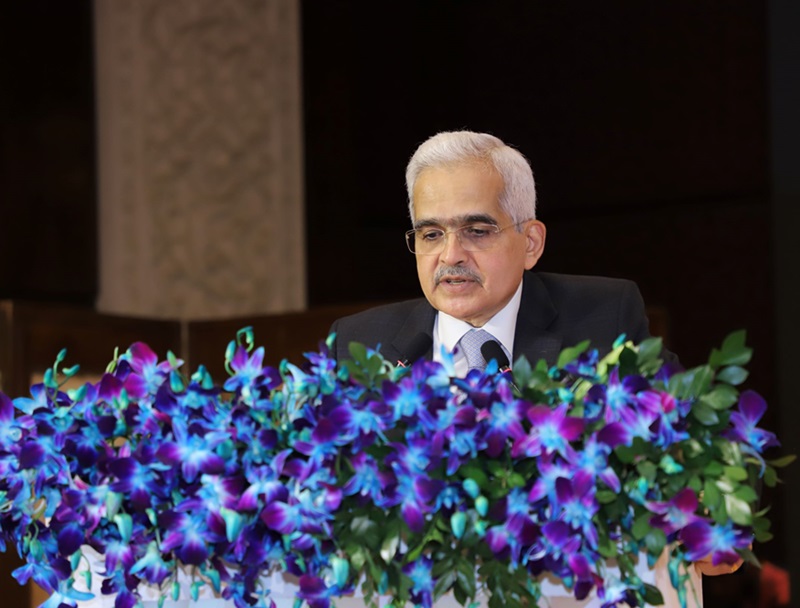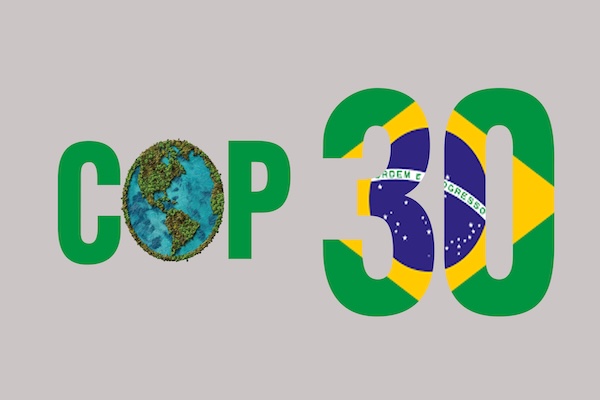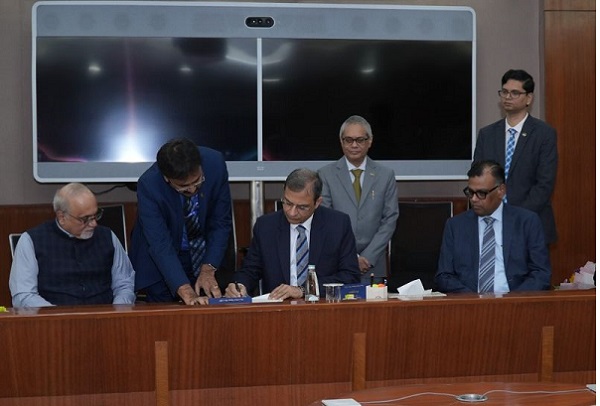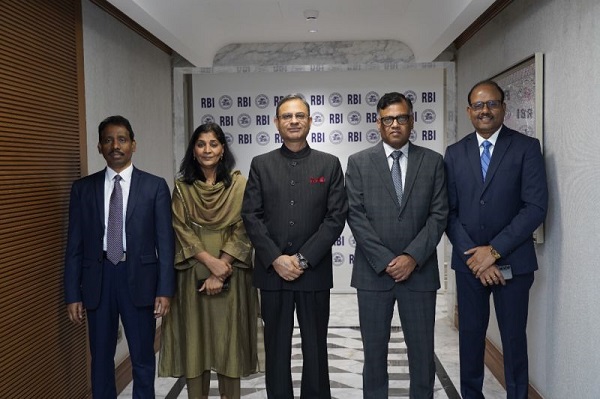.png)

Groupthink is the House View of BasisPoint’s in-house columnists.
January 30, 2025 at 8:54 AM IST
Did the Reserve Bank of India, under Shaktikanta Das, tacitly change the exchange rate policy by adopting a peg against the US dollar?
Some former finance ministry advisors and officials have argued that the RBI has quietly tethered the rupee to the dollar. Most recently, authors led by Arvind Subramanian, former chief economic adviser to the ministry, have expanded this argument through a series of articles in Business Standard.
Subramanian sympathises with the new governor, Sanjay Malhotra, who was with the finance ministry as its revenue secretary until recently. While posting his newspaper column on Twitter (X now), Subramanian wrote that Malhotra had been dealt an impossible hand, an unsustainable policy structure that makes him more of a hostage than an architect of the regime.
Officially, the RBI never declared any change in its exchange rate policy.
Subramanian’s team is correct in that the silence of the RBI officials is disconcerting.
Past governors routinely used phrases like “watching FX markets closely” or “no change in policy”, which is limited to “containing volatility” to reassure markets. Das, once fluent in this vocabulary, remained conspicuously quiet in his final weeks at the RBI even as the market was abuzz with positions building up for the rupee’s depreciation.
Could the usual RBI-speak have helped? Talking up while ignoring the source of the pressure would not have. At best, it may have prevented speculation that the RBI was reverting to an era of exchange rate pegging.
Subramanian’s central argument, the nub of the issue, as he calls it, is the purported shift in RBI’s policy to accommodate the surge in commercial borrowings.
Could this be true?
Ask bankers or even big companies; interest rate arbitrage or finer rates alone do not spur the rush to tap overseas loans. The domestic markets price in the cost of hedging fairly efficiently to ensure there are no undue arbitrages available. Also, companies routinely tap offshore sources of financing to expand and diversify their base of potential investible pools of funding.
External borrowings increased as many infrastructure companies faced a significant financing gap. Regulations on single-borrower exposure, group-level exposure, and infrastructure sector limits at individual banks likely constrained the lending capacity of domestic institutions.
Scarred by past bad loan episodes, banks stepped back from financing large infrastructure projects, shifting instead to high-margin consumer loans.
This would have necessitated tapping of offshore routes for companies’ financing needs.
All ECBs remaining unhedged, as suggested in the newspaper column, could be a bit of a stretch.
Companies typically require the following types of currency hedges:
Capital account exposures, including foreign currency borrowing:
Trade account exposures (imports, exports and working capital)
Companies typically fully hedge any capital account exposures while they follow a programmed hedging approach for trade account exposures, adjusting hedge ratios within a band based on evolving currency views. Specifically, in the case of foreign currency borrowing, lenders often mandate compulsory hedging by the borrowers as part of the terms of loan disbursal.
ECBs remaining totally unhedged is improbable.
Financial Stability
Leaving aside the dollar’s surge, which has caused currencies of several countries to plumb new lows, the source of the troubles for the rupee lies elsewhere.
The RBI appeared to believe that India's financial stability would be the central theme for attracting sovereign investors to park their surpluses. This could give the country the capital needed to finance its ambitious growth objectives non-disruptively.
The assumption was that as long as RBI maintained high foreign currency reserves and upheld financial stability--by way of the rupee holding its level amidst low realised volatility--there would be a high bar for anyone questioning financial stability.
This belief can be traced to the report of the RBI’s Inter-Departmental Group on the Internationalisation of the rupee.
A parallel can be drawn to Shaktikanta Das’s approach during the pandemic when he eschewed reticence on yield curve control, calling an orderly evolution of the yield curve a “public good”. His goal then seemed to be guiding the bond market to absorb the surge in borrowing needed to tackle COVID. He also prioritised financial stability, working to keep borrowing costs in check for both the government and businesses. A similar logic may have shaped his push to build foreign exchange reserves, hold the rupee steady, and bolster financial stability—to attract foreign capital.
The RBI may have believed that high reserves and talking up that aspect would shield the rupee from a sharp fall, a view now proven incorrect.
Separately, there was likely a belief that India's world-class payments system, once integrated with global sovereign networks, could provide the rails to attract surplus funds and provide affordable financing for national ambitions. The enablement of Special INR Vostro Accounts by RBI for foreign entities to park their surpluses in rupee-denominated assets also seems to point in the same direction of thinking. There is no data to prove the point strongly, though.
Then, what went wrong?
Financial stability and macroeconomic stability are not the same, and the former cannot be sustained without the latter.
Did the RBI overlook this distinction? Das and his team repeatedly framed financial stability—particularly in exchange rate management—as a policy success, even as underlying macroeconomic weaknesses emerged.
The slowdown in GDP growth has cast doubt on this game plan of a steady rupee doing the trick. The RBI, for its part, appears to have overestimated growth in its projections.
As is often the case, the rupee was the pressure valve that burst as the RBI tactics refused to allow it to reflect the changing economic reality as warranted.
The RBI may have aimed to stabilise the rupee for a specific objective rather than pegging it.
There has been a dramatic turnaround in the fortunes of the rupee. In a matter of months, the narrative has shifted from “internationalisation of the rupee” to allegations of a pegged exchange rate.
At his first MPC statement next month, the new governor Malhotra would be widely expected to clarify RBI’s stance on the rupee’s fall amidst continued pressure on the rupee. He may repeat the favourite lines of his illustrious predecessors.
The more urgent challenge for him and the government is reviving GDP growth. The upcoming Union Budget will be closely watched for new measures from the Centre to stimulate momentum. Ultimately, growth remains the strongest draw for foreign capital.




